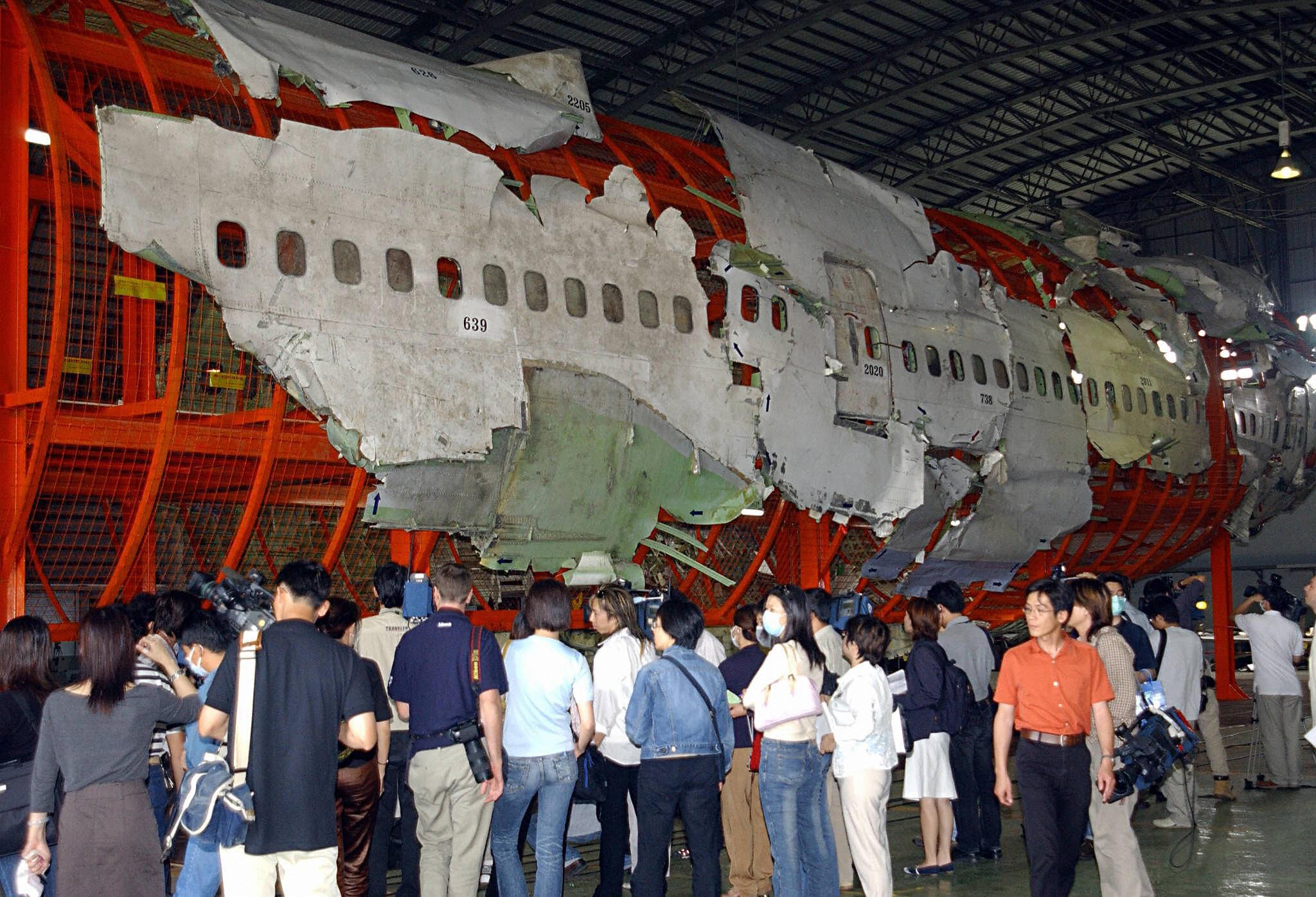World Updates | Update information about politics and social around the world
Tragic Loss: China Airlines Flight 611 Accident
What happened to China Airlines Flight 611 (CI611)?
Editor's Notes: Tragic Loss: China Airlines Flight 611 Accident was published on June 23, 2023. The topic still relevant until now because the incident happened not so long ago and the cause of accident still mystery.
As a result of our consistent effort doing some analysis, digging information, we put together this "Tragic Loss: China Airlines Flight 611 Accident" guide to help target audience make the right decision.
Key differences or Key takeaways:
| Key Differences | Key Takeaways |
| Aircraft: Boeing 747-200 | Root cause of failure still remain a mystery |
| Date: May 25, 2002 | Implementation of new maintenance procedures and safety measures in the aviation industry |
| Location: Taiwan Strait | Improved understanding of metal fatigue and its effects on aircraft maintenance |
FAQ
The crash of China Airlines Flight 611 remains a tragic event in aviation history. This FAQ section aims to provide essential information and address common questions surrounding the accident.

Air Crash Investigation On X: ? ?? ???? ??? (????): China , 51% OFF - Source www.micoope.com.gt
Question 1: What are the key facts about the accident?
China Airlines Flight 611 was a Boeing 747-200 passenger plane that crashed into the Taiwan Strait on May 25, 2002, killing all 225 passengers and crew. The aircraft took off from Taipei, Taiwan, and was bound for Hong Kong.
Question 2: What caused the crash?
The official investigation concluded that metal fatigue in the aircraft's tail section caused a catastrophic structural failure. The fatigue was caused by a combination of factors, including the aircraft's age, the high number of pressurization cycles it had experienced, and improper repairs.
Question 3: Were there any survivors?
There were no survivors of the crash. The aircraft broke up in mid-air, and the impact with the water was so severe that there were no intact bodies recovered.
Question 4: How were the victims identified?
The victims were identified through DNA analysis. The process was challenging due to the extensive damage to the bodies, but it was ultimately successful in identifying the vast majority of the victims.
Question 5: What safety measures were implemented as a result of the accident?
In the wake of the crash, new safety regulations were implemented worldwide to address the risks associated with metal fatigue. These regulations included more frequent inspections of aircraft structures and improved maintenance procedures.
Question 6: What is the legacy of China Airlines Flight 611?
The crash of China Airlines Flight 611 was a tragic event that had a profound impact on the aviation industry. It led to increased awareness of the importance of metal fatigue inspection and prevention, and it helped to improve the safety of air travel for all.
The memory of the victims and their families serves as a reminder of the importance of aviation safety and the need to continually strive for improvements.
Next Article
Tips
The Tragic Loss: China Airlines Flight 611 Accident underscores the importance of adhering to safety protocols and procedures in the aviation industry. The following tips can help prevent similar tragedies in the future:
Tip 1: Implement robust maintenance and inspection programs to ensure aircraft are in optimal condition.
Tip 2: Enhance pilot training to emphasize proper maintenance and inspection techniques, as well as emergency response procedures.
Tip 3: Establish clear communication protocols between pilots and air traffic controllers to prevent misunderstandings and ensure timely coordination.
Tip 4: Enhance the use of advanced technology, such as real-time flight tracking and predictive maintenance systems, to monitor aircraft health and prevent potential issues.
Tip 5: Foster a culture of safety within the aviation industry, encouraging open reporting of concerns and proactive risk assessment.
Summary: Adhering to these tips can significantly reduce the risk of aviation accidents and enhance the safety of air travel. By prioritizing maintenance, training, communication, technology, and safety culture, the industry can honor the victims of Flight 611 and prevent such tragedies from occurring again.
Tragic Loss: China Airlines Flight 611 Accident
The tragic loss of China Airlines Flight 611 on May 25, 2002, was a poignant event that raised significant safety concerns and marked a somber chapter in aviation history. The accident's profound impact underscores the need to delve into its key aspects to glean valuable insights and prevent similar occurrences.
- Devastating Impact: The accident resulted in the devastating loss of 225 lives, leaving behind profound grief and unanswered questions.
- Safety Scrutiny: The crash triggered intense scrutiny of aircraft maintenance procedures and the regulatory oversight of the aviation industry.
- Structural Failure: The investigation revealed a structural flaw in the aircraft's tail fin, highlighting the importance of rigorous design and manufacturing standards.
- Technological Advancements: The accident spurred the development of advanced aircraft tracking systems and improved flight data recorders.
- International Cooperation: The investigation involved collaboration between multiple nations, demonstrating the importance of international cooperation in aviation safety.
- Lessons Learned: The tragic loss of Flight 611 served as a catalyst for extensive safety enhancements and improved pilot training protocols.
These key aspects provide valuable insights into the complexities of the China Airlines Flight 611 accident. They underscore the need for robust safety measures, rigorous design standards, international collaboration, and the relentless pursuit of lessons learned to prevent such tragedies in the future.

Deadly Metal Fatigue: The Story Of China Airlines Flight 611 - Source simpleflying.com

China Airlines 611 CVR Transcript - Source tailstrike.com
Tragic Loss: China Airlines Flight 611 Accident
The China Airlines Flight 611 accident, a tragic aviation disaster that occurred on May 25, 2002, resulted in the loss of 225 lives.

Deadly Metal Fatigue: The Story Of China Airlines Flight 611 - Source simpleflying.com
The accident was caused by a combination of factors, including a design flaw in the aircraft's tail section and inadequate maintenance. The impact of the disaster was devastating, leading to a re-examination of aircraft safety standards and maintenance procedures.
The lessons learned from the China Airlines Flight 611 accident have had a significant impact on aviation safety worldwide. New regulations have been implemented to address the design flaw that led to the crash, and maintenance procedures have been strengthened to prevent similar incidents from occurring in the future.
The tragedy of China Airlines Flight 611 serves as a reminder of the importance of aviation safety and the need for continued vigilance in the maintenance and operation of aircraft.
Conclusion
The China Airlines Flight 611 accident highlights the devastating consequences of aviation disasters. The loss of 225 lives underscores the importance of aviation safety and the need for ongoing efforts to improve aircraft design, maintenance, and operating procedures.
The lessons learned from this tragedy have had a lasting impact on aviation safety worldwide, leading to new regulations and enhanced maintenance practices. By continuing to prioritize safety, we can help prevent similar tragedies from occurring in the future.